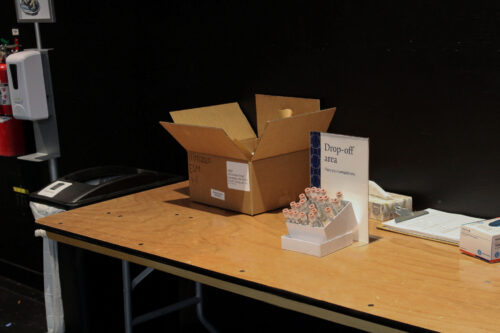Image courtesy of Yasmine Halmane.
Defying the pessimists who doubted the ability of Yale students to follow COVID-19 safety protocols, the Yale student body conducted itself in a safer manner than expected last semester. To put a number on it, the R0 value, or the number of secondary cases generated by an initial case, of the student body last semester was 1.85—compared to the 2.3 that experts set as the maximum value that could still keep student infections under control. Yale researchers Joseph Chang, Forrest Crawford, and Edward Kaplan calculated this number and devised the twice-weekly testing plan implemented among Yale College’s on-campus student body last semester.
After building a model that took into account multiple factors, such as test sensitivity, imported infections from outside of campus, and the time delay from a positive test to relocation, the team recommended a twice-weekly testing schedule to the administration. “There was a lot of hard swallowing,” Kaplan said. “The original idea, before people had done much analysis, was that we might just be able to test a couple people every week to kind of keep some background information. But very quickly we realized that the purpose of a repeat testing program in the university setting isn’t to do surveillance. It’s to prevent the spread of infection.”
Intensive repeat screening is the first step in reducing COVID-19 transmissions; the team’s calculations showed that once-weekly testing likely wouldn’t be enough to keep infections low. The second step is mandated isolation. “People always think of testing as the prevention program, but testing tells you who needs to be isolated. That’s what really prevents the spread of infection,” Kaplan said. He pointed out the University of Illinois as an example—a school that provided regular testing but didn’t initially enforce isolation for those who tested positive. “People who had knowingly tested positive were skipping out and going to parties,” Kaplan said. The result was a large spike of cases at the beginning of the year, after which the university reinforced isolation.
Thanks to the existence of strong testing and quarantine programs from the beginning of the school year, Yale never experienced a spike to the severity of the University of Illinois’s. A total of 191 students living in New Haven (including undergraduates and graduates, living both on- and off-campus) tested positive last semester, far under the goal that the administration set at the outset of the fall semester: less than three hundred students—five percent of the approximately six thousand students regularly tested—testing positive.
As the spring semester gets underway, a new development is the sizable number of first years living off-campus in New Haven. Chang and Kaplan call them “ghost students”—students who don’t officially have access to campus but will likely still mingle with both on- and off-campus students. Testing services are still available to them, but it is probable that not all students will continue to get tested twice a week. “Young people themselves won’t have serious medical consequences, but they will continue to transmit the virus if they’re not careful,” Kaplan said. “It’s one of these collective action problems where everyone acting together will collectively keep us safe, but if we have enough people who are shirking on that responsibility, that’s just going to keep the engine [of COVID transmission] running.”
Citations:
Chang, J.T., Crawford, F.W. & Kaplan, E.H. Repeat SARS-CoV-2 testing models for residential college populations. Health Care Manag Sci (2020). https://doi.org/10.1007/s10729-020-09526-0

